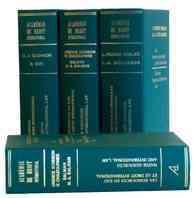- ホーム
- > 洋書
- > 英文書
- > Cinema / Film
基本説明
New in paperback. Hardcover was published in 2010.
Full Description
Why can fear be pleasurable? Why do we sometimes enjoy an emotion we otherwise desperately wish to avoid? And why are the movies the predominant place for this paradoxical experience? These are the central questions of Julian Hanich's path-breaking book, in which he takes a detailed look at the various aesthetic strategies of fear as well as the viewer's frightened experience. By drawing on prototypical scenes from horror films and thrillers like Rosemary's Baby, The Silence of the Lambs, Seven and The Blair Witch Project, Hanich identifies five types of fear at the movies and thus provides a much more nuanced classification than previously at hand in film studies. His descriptions of how the five types of fear differ according to their bodily, temporal and social experience inside the auditorium entail a forceful plea for relying more strongly on phenomenology in the study of cinematic emotions. In so doing, this book opens up new ways of dealing with these emotions. Hanich's study does not stop at the level of fear in the movie theater, however, but puts the strong cinematic emotion against the backdrop of some of the most crucial developments of our modern world: disembodiment, acceleration and the loosening of social bonds. Hanich argues that the strong affective, temporal, and social experiences of frightening movies can be particularly pleasurable precisely because they help to counterbalance these ambivalent changes of modernity.
Contents
List of Figures Acknowledgments Part I Introduction Chapter One: How to Describe Cinematic Fear, or Why Phenomenology? Chapter Two: Multiplexperiences: Individualized Immersion and Collective Feelings Part II Chapter Three: Frightening Fascination: A Phenomenology of Direct Horror Chapter Four: Intimidating Imaginations: A Phenomenology of Suggested Horror Chapter Five: Startling Scares: A Phenomenology of Cinematic Shock Chapter Six: Anxious Anticipations: A Phenomenology of Cinematic Dread Chapter Seven: Apprehensive Agitation: A Phenomenology of Cinematic Terror Part III Chapter Eight: Moments of Intensity: Lived-Body Metamorphoses and Experienced Time Chapter Nine: Moments of Collectivity: The Cinema of Fear and Feelings of Belongingness Chapter Ten: The End Notes Bibliography Index







